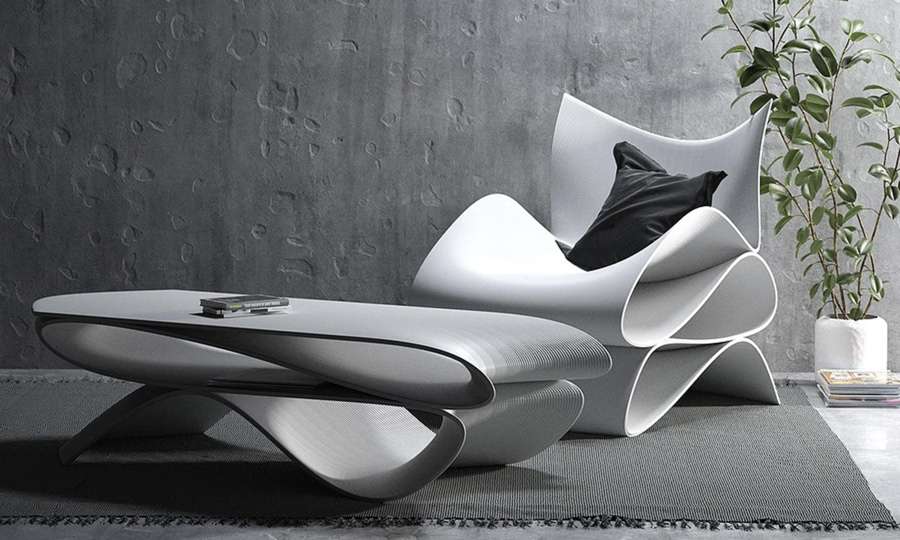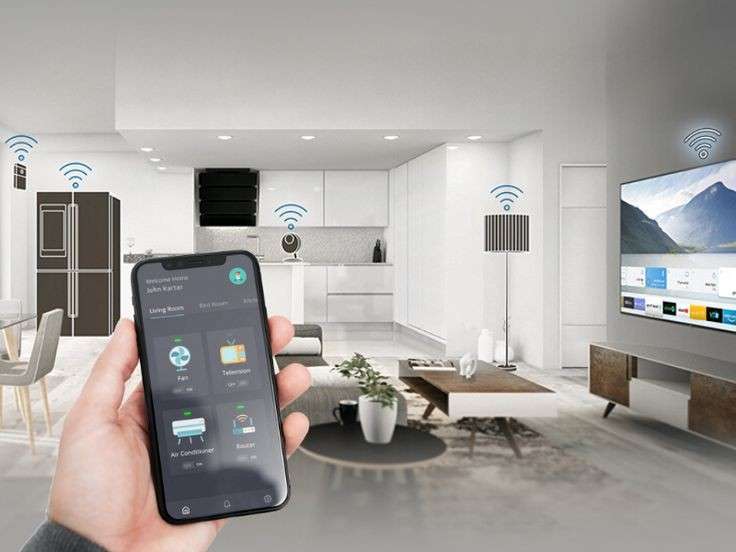In recent years, 3D printing has taken the world by storm, transforming industries across the globe. One area where this groundbreaking technology is making waves is in the field of interior design. The ability to create intricate, customized pieces at a fraction of the time and cost of traditional methods is opening up new possibilities for designers and homeowners alike. From furniture to lighting fixtures and wall decor, 3D printing is reshaping the way we approach interior design. At Scale & Structure, we are leading the way in integrating 3D printing into interior design, delivering unique, personalized solutions that truly transform spaces.
In this blog, we’ll explore how 3D printing is impacting interior design and why it’s a game-changer for the industry.

What is 3D Printing in Interior Design?
3D printing, also known as additive manufacturing, is the process of creating three-dimensional objects from a digital file. The printer deposits material layer by layer, building the object from the ground up. In the context of interior design, this technology is used to produce custom furniture, decor items, architectural elements, and even entire room layouts. This method allows designers to produce unique and personalized pieces that would be nearly impossible to create using traditional manufacturing techniques.
At Scale & Structure, we harness the full potential of 3D printing to craft extraordinary designs that fit seamlessly into our clients’ spaces.
Customization: The Key Advantage of 3D Printing
One of the most significant benefits of 3D printing in interior design is the level of customization it offers. Traditional interior design relies heavily on mass-produced furniture and decor, but with 3D printing, every item can be tailored to the exact specifications and aesthetic preferences of the client. Whether it’s a uniquely shaped coffee table or a bespoke chandelier, 3D printing allows for a level of creativity and individuality that was once out of reach.
Benefits of Customization:
- Personalized designs: Homeowners can create pieces that fit perfectly with their style, space, and needs.
- Unmatched creativity: Designers can push the boundaries of traditional furniture design, producing sculptural and intricate pieces.
- Seamless integration: 3D printed items can be made to fit specific measurements and designs, ensuring that everything blends seamlessly with the existing interior.
At Scale & Structure, our commitment to personalization allows us to bring each client’s vision to life with precision and creativity.
Cost-Effectiveness and Efficiency
While 3D printing can be perceived as a high-tech, expensive option, it is actually more cost-effective than many traditional methods. With 3D printing, the need for extensive labor, materials, and overhead costs is significantly reduced. Designers can create complex pieces without worrying about high production costs or long lead times.
How 3D Printing Reduces Costs:
- Material efficiency: 3D printing uses only the necessary material for each piece, reducing waste and cost.
- Faster production: Items can be produced quickly, saving time and money.
- Lower shipping costs: Since 3D printing can be done on-site or at a local facility, transportation expenses are minimized.
This efficiency is particularly beneficial for custom projects or unique one-off designs, where the costs associated with traditional manufacturing methods can be prohibitive. At Scale & Structure, we pride ourselves on delivering cost-effective, high-quality solutions for our clients without compromising on creativity or design integrity.
Sustainability: A Green Revolution in Interior Design
As sustainability becomes an increasingly important consideration in design, 3D printing offers an eco-friendly alternative to traditional manufacturing methods. With less waste generated and the ability to use sustainable materials, 3D printing can contribute to a greener, more sustainable interior design process.
Sustainability Benefits of 3D Printing:
- Reduced material waste: Traditional manufacturing methods often involve cutting away large chunks of material, while 3D printing only uses the material needed to build the item.
- Use of recycled materials: 3D printers can use recycled plastics, metals, and other materials, giving a second life to waste products.
- Energy efficiency: 3D printing typically consumes less energy than traditional production methods, reducing the carbon footprint of manufacturing.
At Scale & Structure, we are committed to sustainability and actively incorporate eco-friendly materials and methods into our designs, ensuring that your space is not only beautiful but also environmentally conscious.
Innovation in Design Aesthetics
3D printing unlocks new possibilities for creating cutting-edge, futuristic designs. The technology allows for intricate patterns, textures, and geometries that would be extremely challenging to achieve with conventional materials and techniques. This ability to produce complex, customized shapes is revolutionizing how designers approach aesthetics in interior spaces.
Examples of Innovative Designs:
- Organic forms: Designers can experiment with flowing, organic shapes that are impossible to create with traditional tools.
- Intricate textures: 3D printers can produce highly detailed textures, such as latticework or geometric patterns, that add depth and character to a room.
- Interactive features: Some 3D printed designs incorporate interactive elements, like movable parts or light-reactive features, adding an engaging aspect to interior decor.
With 3D printing, Scale & Structure empowers designers to push the boundaries of creativity, resulting in dynamic and one-of-a-kind designs that elevate your space.
Faster Prototyping and Design Iteration
In the past, creating prototypes for custom furniture or decor was a time-consuming and costly process. However, with 3D printing, designers can quickly create prototypes of their ideas, allowing them to test, refine, and iterate on designs in real time. This speed of prototyping means that designers can experiment with different ideas and achieve the perfect result in less time.
Advantages of Fast Prototyping:
- Quick turnaround: Designers can produce prototypes in hours or days, instead of weeks.
- Cost-effective testing: With less expense involved in prototyping, designers can explore a wider range of design options without worrying about budget constraints.
- Real-time feedback: Clients can see physical prototypes of their designs and provide feedback before the final piece is created.
At Scale & Structure, we leverage fast prototyping to ensure that our clients are always involved in the design process, making real-time adjustments to ensure that the final product meets their expectations perfectly.
Conclusion: The Future of Interior Design with Scale & Structure
The impact of 3D printing on interior design is undeniable. This innovative technology is empowering designers to create personalized, sustainable, and visually stunning interiors like never before. Whether you’re looking to bring a one-of-a-kind piece of furniture into your home or experiment with futuristic design elements, 3D printing offers endless possibilities.
At Scale & Structure, we are proud to be at the forefront of this revolution, offering our clients creative, cost-effective, and sustainable design solutions that transform any space.
As the technology continues to evolve, we can expect even more exciting advancements in how 3D printing will shape the future of interior design. By embracing this technology, interior designers can stay ahead of the curve and offer their clients unparalleled creativity and customization. The future of interior design is here, and it’s 3D printed!



